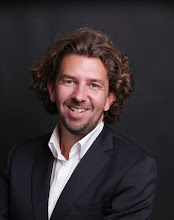CO2 capture and storage (CCS) has the potential to account for 20% of global greenhouse gas reduction. A number of initiatives are underway to encourage widespread deployment. Pilot plants are being run around the world and several countries and federations are already establishing directives and regulations to guide the development of these emerging technologies. First scale one coal power stations equipped with CCS should be in operation no later than 2015 but other industries such as steel making are also studying CCS as a solution to reduce their CO2 emissions.
GEOGREEN : A unique expertise in CO2 transport and geological storage
Geogreen is an international services company specialized in CO2 transport and storage offering its clients strategic studies in the areas of CO2 capture, transport and storage in addition to engineering studies and technical assistance relating to CO2 transport and geological storage. Geogreen is a subsidiary of the IFP (French Petroleum Institute), Geostock (an underground hydrocarbon storage company) and BRGM (Bureau de Recherche Géologique et Minière).
The company has a perfect technical complementarity with its experts enables Geogreen to provide the industries concerned and a comprehensive range of services, covering the whole chain from the transport of CO2 to its geological storage, from upstream expertise to engineering and project development.
In the longer term, Geogreen will offer injection site operation assistance, inspection and maintenance services, and monitoring services related to post-injection control of storage sites.
Geogreen’s capital is held by IFP, Géostock and BRGM.



Storage approach
Once captured and transported, CO2 is then injected and stored underground at depths of at least 800 meters.
Three potential storage methods are envisaged:
Storage in depleted oil and gas fields.
Theoretically, this is the easiest option to implement since these structures have held oil and gas for millions of years and this geological environment is well known. The injection of CO2 also helps to improve recovery of the oil and gas present. However, the storage capacity of these reservoirs is insufficient and they are very unequally distributed around the world, often far from industrial facilities.
Experimental storage operations are already under way in these types of reservoirs.
Storage in unused coal seams.
The capacity of coal to “adsorb” – or preferentially trap – CO2 in place of the methane naturally present in coal, represents an interesting capture mechanism. But this option is limited by the porosity and permeability of coal, which remain low.
Storage in deep saline aquifers.
These are reservoirs of non-potable salt water, located at great depths, which offer the greatest potential in terms of storage capacity. They are better distributed over the world’s surface than oil and gas reservoirs. A significant amount of research is currently under way aimed at characterizing these and assessing their potential in terms of geological storage.
Source : Geogreen












